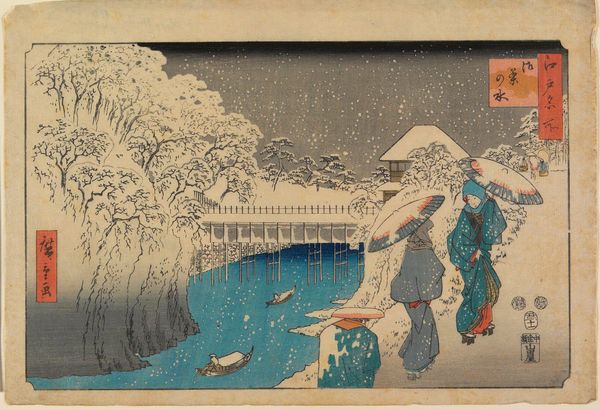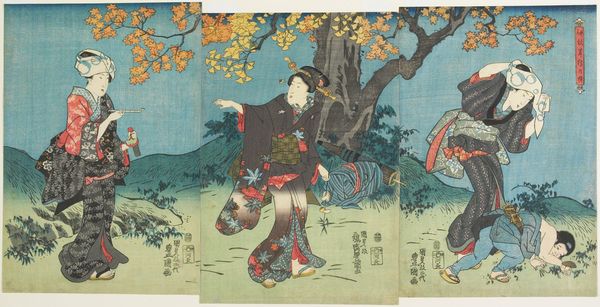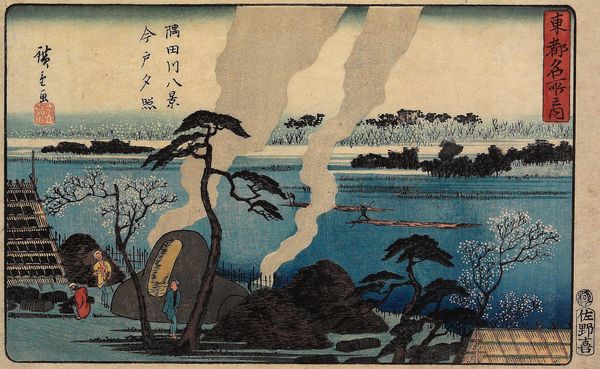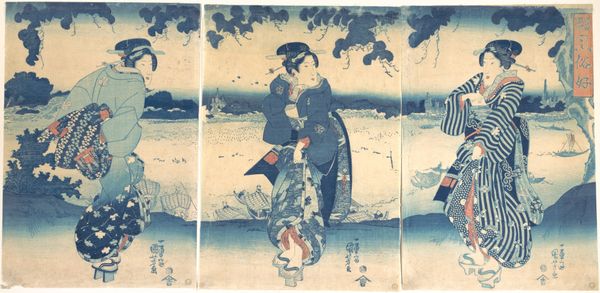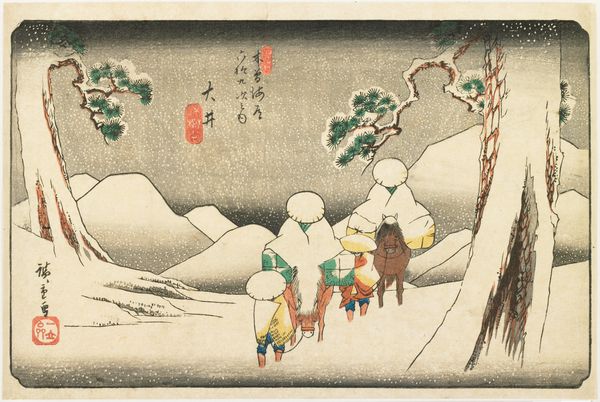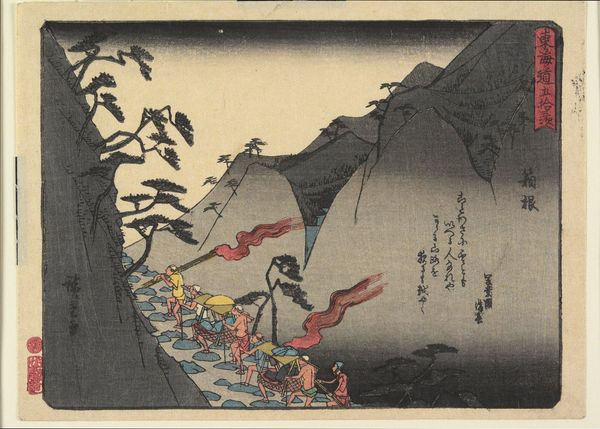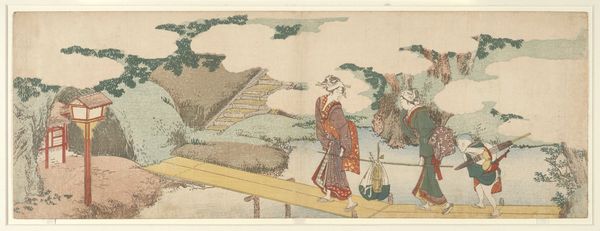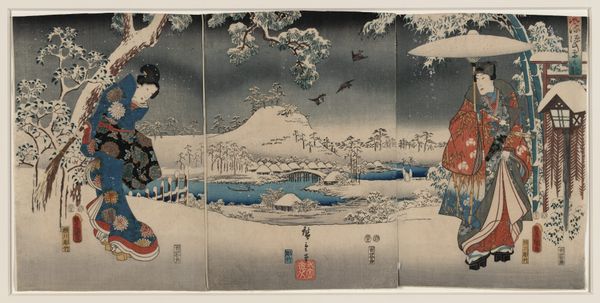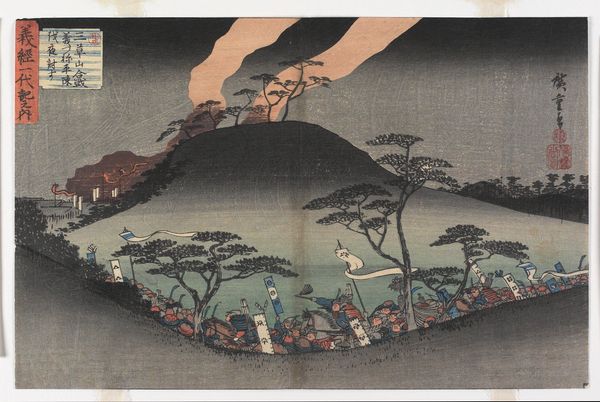
print, ink, woodblock-print
# print
#
asian-art
#
landscape
#
ukiyo-e
#
japan
#
figuration
#
ink
#
woodblock-print
Dimensions: 9 1/8 x 12 11/16 in. (23.2 x 32.3 cm) (image, sheet)
Copyright: Public Domain
Curator: This woodblock print, “Woman and Badger,” from around the 19th century by Utagawa Hiroshige, immediately strikes me with its intriguing composition. What is your initial take on this piece? Editor: A bit eerie, if I'm honest. The figure hunched amidst those reeds definitely disrupts any expectation of typical serene landscapes often seen in ukiyo-e. There's a sense of concealed labor, something furtive and potentially transgressive taking place. Curator: Indeed, there's a fascinating dialogue established between the human and the animal. The woman, bearing a sizable basket, perhaps laden with her trade or foraged goods, juxtaposes strangely with the badger who seems almost caught in its own domestic enterprise within the tall grasses. Note how the black inks emphasize contour, directing your vision through an intriguing spatial recession, while grounding the depicted activities within tangible form. Editor: And the production itself, let's remember this is a print, it reveals much about the labour involved. This isn't a spontaneous painterly gesture but a constructed image borne from collaboration; artisan carvers meticulously translating Hiroshige's designs, inkers ensuring uniform applications onto paper. And then the paper itself: its quality, its source... This work speaks volumes about the entire economy of printmaking at the time. What was the circulation? Who were its intended consumers? Curator: Good points. Beyond the social aspects you raised, from a formal stance, there's deliberate asymmetry in the placement of the figures and compositional elements; the dark bush on the left, balancing against the grasses on the right. I interpret this as mirroring a kind of tension between the everyday reality the woman is moving through versus something primal hinted at by the badger. Editor: That tension resonates in how their labors converge: the woman bearing and transporting, the badger seemingly fishing or preparing its catch. It makes me consider subsistence strategies, human entanglement with animal lifecycles, perhaps reflecting concerns about food security and rural existence that would have been familiar anxieties during its creation. How do labor, materials and environment come into conversation? Curator: The print’s formal aspects invite layers of interpretation that enrich the image beyond merely documenting a simple rural scene, offering contemplation on society, humanity and their relation to the natural world. Editor: Absolutely. Attending to materials, means of production allows us to consider how ukiyo-e was enmeshed within the broader social fabric and its relationship with class, labor, and its natural context. It is, itself, a manufactured artefact intimately tied to tangible experience.
Comments
No comments
Be the first to comment and join the conversation on the ultimate creative platform.

